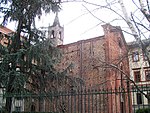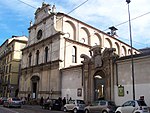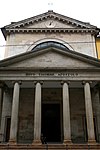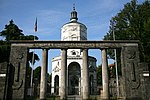Università Cattolica del Sacro Cuore (English: Catholic University of the Sacred Heart, colloquially the Catholic University of Milan), known as UCSC or UNICATT or simply Cattolica, is an Italian private research university founded in 1921. Cattolica, with its five affiliated campuses, is the largest private university in Europe and the largest Catholic University in the world. Its main campus is located in Milan, Italy, with satellite campuses in Brescia, Piacenza, Cremona and Rome.
The university is organized into 12 faculties and 7 postgraduate schools. Cattolica provides undergraduate courses (Bachelor's degree, which corresponds to Italian Laurea Triennale), graduate courses (Master's degree, which corresponds to Laurea Magistrale, and specializing master) and PhD programs (Dottorati di ricerca). In addition to these, the university runs several double degree programs with other institutions throughout the world. Degrees are offered both in Italian and in English.UCSC has been granted five stars by QS Stars, a global university rating system, in the following fields: employability, teaching, facilities and engagement.Agostino Gemelli University Polyclinic serves as the teaching hospital for the medical school of the Università Cattolica del Sacro Cuore and owes its name to the university founder, the Franciscan friar, physician and psychologist Agostino Gemelli.











